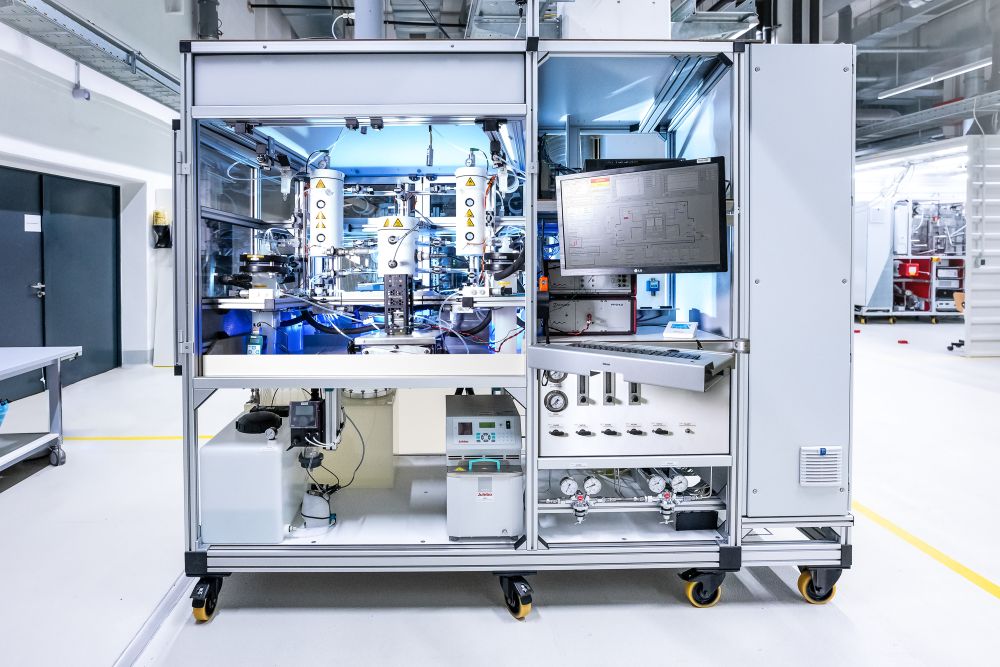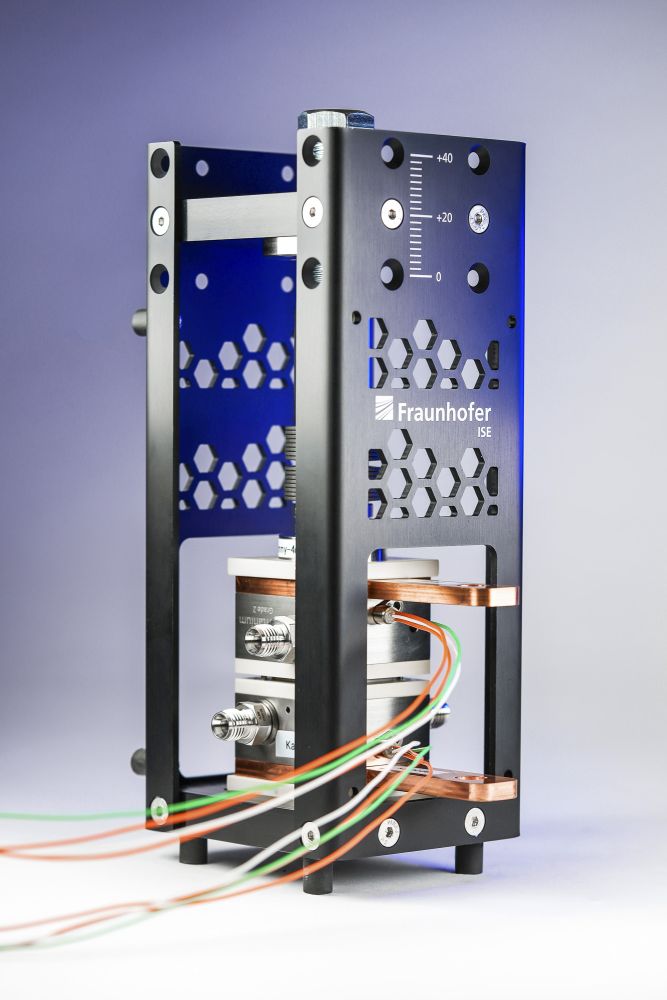| Duration: | 06/2021 - 05/2025 |
| Contracting Authority/Sponsors: | European Union |
| Project Partners: | International Iberian Nanotechnology Laboratory INL (coordinator), Hydrolite Ltd., MagnetoCat S.L., Eindhoven University of Technology |
| Website: | |
| Project Focus: |
SpinCat – Spin-polarized Catalysts for Energy-Efficient AEM Water Electrolysis


As part of the EU-funded SpinCat project, Fraunhofer ISE is investigating novel spin-polarized catalysts to increase the efficiency of AEM electrolysis. These innovative catalysts are being developed and tested in an international consortium and then measured at Fraunhofer ISE using our own specially designed hardware.
The EU SpinCat project is investigating a promising class of catalysts for the oxygen evolution reaction (OER) in water electrolysis. The aim is to develop novel precious-metal-free, spin-polarized catalysts and to evaluate their activity under the influence of magnetic fields. Since the AEM electrolysis process involves an alkaline environment, it is possible – unlike with acidic PEM electrolyzers – to research and test the entire range of precious-metal-free catalysts. The consortium partners are working along the entire scientific value chain:
- Precious-metal-free catalysts are identified by the project partner MagnetoCat using a general theoretical model of the effects of electron spin.
- The design and production of the most promising catalysts at the laboratory scale, as well as the initial electrochemical characterization, are undertaken by the project partner INL.
- Further characterization and a deeper understanding of the effects of magnetically amplified OER are provided by the project partner TU/e.
- The project partners Hydrolite and Fraunhofer ISE are developing new methods and hardware to test the developed catalysts for AEM electrolysis at laboratory scale.
The expertise provided by Fraunhofer ISE covers the following key areas:
- Conception, design and construction of a new non-pressure AEM electrolysis test bench for measuring the newly developed catalysts under near-industrial operating conditions. The highlights include the comprehensive use of highly resistant special plastics to minimize cross-contamination, the fully automated mode of operation for carrying out long-term tests over several hundred hours, and the construction itself, which was carried out in accordance with all current industry standards (“CE-ready”).
- Conception, design and construction of a novel AEM laboratory electrolysis cell (4 cm²) for measuring the catalysts under industrially relevant conditions with and without magnetic fields. The cell is based on an established design that has been used at Fraunhofer ISE for several years with great success in PEM electrolysis.
- Development and testing of complex measurement protocols for the complete characterization of electrochemical performance and long-term stability of the catalysts developed in SpinCat.
- Development of a commercialization strategy for the solutions developed in the SpinCat project, including patent searches, market analyses and IP monitoring.
With its work in SpinCat, Fraunhofer ISE is supporting the development of future generations of highly efficient electrolyzers with significantly reduced use of critical raw materials.
